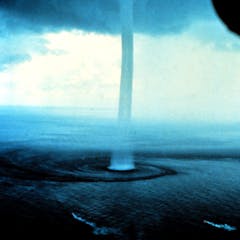
Articles on Bureau of Meteorology
Displaying 1 - 20 of 75 articles

The new threat from cyclones can come from behind you – flooding from more intense rainfall.

We crave certainty in our weather forecasts. But that’s only possible for big weather events such as cyclones and major storms. Everything else is probability.

El Niño looms large as we head into the Australian summer. But can everyone expect hot and dry weather? What drives the weather in your state?

It’s not just ocean temperatures that determine whether we have El Niño or La Niña. Air circulation also plays a role, and it’s changing in unexpected ways.

Not all La Niñas are wet, nor El Niños dry – especially if you live in Sydney. So here’s how to interpret what an El Niño forecast means for you.

The latest Bureau of Meteorology forecast offers relief from record rain and floods brought about by La Niña. A longer-term outlook for El Niño is still up in the air – but its arrival would be disastrous.

The report synthesises the latest science about Australia’s climate – and paints a worrying picture.

Processes like La Niña set the scene for the sort of extreme weather that has hit eastern Australia. But what decides which towns and suburbs are hit hardest, and which ones are spared?

The air that arrives at Kennaook is said to be some of the cleanest in the world. I set up my camera and tripod, and started filming.

Forest fires in Australia are burning more land across more of the year than ever before, as climate-linked fire weather worsens.

The southern parts of Australia are expected to become increasingly dry due to climate change. Yet, we now find ourselves subject to another La Niña event. What’s going on?

While land tornadoes are associated with huge supercell thunderstorms, waterspouts can form during smaller storms or even just showers or the presence of the right kind of clouds.

Yes, some of this is normal seasonal transition. But at least a portion of it is due to a particularly vigorous cold front that swept across southeast Australia over the weekend.

Downpours in eastern Australia this year have been good for crops and some dams. But when it comes to drought, Australia is not out of the woods yet.

Despite this year’s coronavirus lockdowns, more CO2 has accumulated in the atmosphere than during the same period in 2017 or 2018.

Concentrations of carbon dioxide are now 147% above pre-industrial levels, according to a definitive report by the World Meteorological Organisation released today.

Autumn may bring wetter-than-average conditions in parts of southern Australia, indicating a gradual easing of the drought in some areas.

Some parts of Australia have enjoyed excellent rainfall this year, but others have not. Drought relief is still slow and patchy.

The Bureau of Meterology says persistent drought and record temperatures were a major driver of Australia’s fire activity, and the context for 2019 lies in the past three years of drought.

The peak time for heatwaves in southern Australia has not yet arrived. Many parts of Australia can expect heavy rains and flooding. And northern Australia’s cyclone season is just gearing up.
